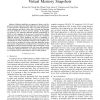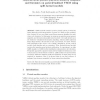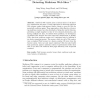10 search results - page 1 / 2 » Malicious Shellcode Detection with Virtual Memory Snapshots |
INFOCOM
2010
IEEE
13 years 3 months ago
2010
IEEE
Abstract—Malicious shellcodes are segments of binary code disguised as normal input data. Such shellcodes can be injected into a target process’s virtual memory. They overwrite...
ICISC
2007
13 years 6 months ago
2007
VMM (virtual machine monitor) based system provides the useful inspection and interposition of guest OS. With proper modification of guest OS, we can obtain event-driven memory sn...
DIMVA
2009
13 years 5 months ago
2009
Drive-by download attacks are among the most common methods for spreading malware today. These attacks typically exploit memory corruption vulnerabilities in web browsers and brows...
COLCOM
2008
IEEE
13 years 6 months ago
2008
IEEE
Abstract. Malicious Web content poses a serious threat to the Internet, organizations and users. Current approaches to detecting malicious Web content employ high-powered honey cli...
ACSAC
2010
IEEE
13 years 1 months ago
2010
IEEE
Heap spraying is an attack technique commonly used in hijacking browsers to download and execute malicious code. In this attack, attackers first fill a large portion of the victim...



